They are known as hard-working, detail-oriented and fiercely determined, friends of flowers and makers of the nectar that sweetens our morning coffees and teas. There are many ways bees help the environment and enrich human life. But did you know these little insects are also powerful partners in achieving the Sustainable Development Goals?
By acting as pollinators, bees promote biodiversity (Goal 15) and fight hunger (Goal 2). They provide decent jobs (Goal 8) in agriculture and other sectors, advancing Goal 1, no poverty. They maintain balance in our ecosystems, but these little helpers are under pressure from a variety of forces.
Keep reading to learn what all the buzz is about, and help spread the word about the power of bees!

DID YOU KNOW?
Bees are among the only insects in the world that produce food people can eat.
Source: americanbeejournal.com
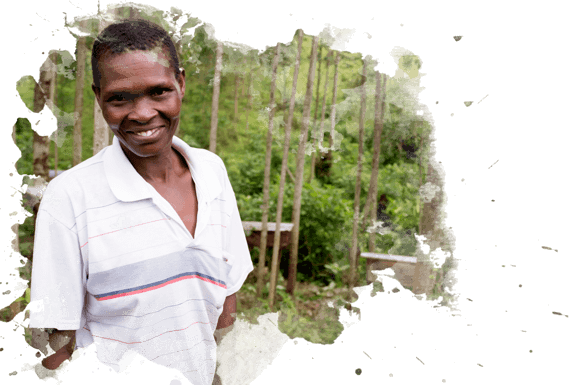
“I have benefitted from beekeeping by being able to educate my children.” Victoria, Uganda
Mama Beehive
Victoria Namalikye is better known in her community as “Mama Beehive”. With a broad smile and obvious pride, she asserts, “I am famous with the bees. They know me.”
Victoria is a beekeeper and mother of seven in Uganda. Profits from her honey sales are paying for her children’s school fees and uniforms, securing a better life for the next generation. “I have benefitted from beekeeping by being able to educate my children,” she says.
Here in the mountains of eastern Uganda, and in many other places, bees play a significant role in nature and in human life. They contribute to food security and nutrition, sustainable agriculture, biodiversity conservation and environmental protection. In addition, beekeeping and production of honey and related products provide livelihoods, especially in developing countries, that can empower women and youth.
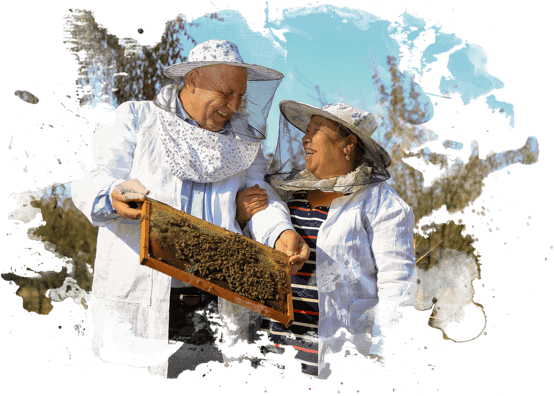
“They [bees] are not very different from us.”Mehriban, Uzbekistan
Family ‘beesness’
Bakhtiyar Menligiev has been involved in bee farming in Uzbekistan since 2014. In that time, he’s managed to increase his hives from four to 18 and now owns three hectares of horticultural land. While some countries in Europe and North America have recorded declines, globally the number of managed western honey bee hives has increased over the last five decades.
Beekeepers help ensure a healthy bee population, but for Bakhtiyar, the best part is that he gets to work with his family. His wife Mehriban says that she likes to observe how bees work and live as one family. “They are not very different from us in that regard,” she laughs.
Their children, Sevinchay and Kuwanishbek, love the fresh honey from the farm. Besides honey, bees provide royal jelly, pollen and other nutritious foods as well as sub products like beeswax and propolis, used in the cosmetics and health industries.

DID YOU KNOW?
To make 1kg of honey, a bee must visit 4 million flowers and fly 4 times the distance around the world.
Source: worldbeeday.org
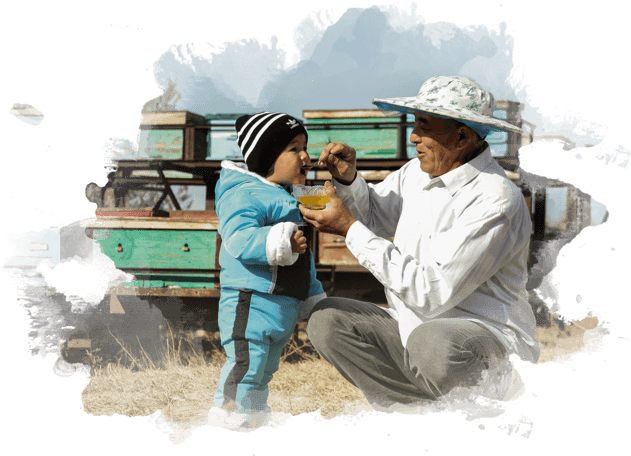
“Beekeeping is more than just a job to me. It’s my life.” Kuralbay, Uzbekistan
The birds and the bees
The benefits of beekeeping are not just economic and not limited to the beekeepers. Bees pollinate plants near their hives and for miles around, helping to improve biodiversity. Pollinators such as birds, butterflies and bats transport pollen from flower to flower to fertilize plants. This process makes it possible for fruits and seeds to develop and therefore is critical to a healthy human diet.
According to FAO, 75 percent of the world's food crops depend at least in part on pollination by insects and other animals, the reason why bees are considered the invisible helpers of farmers across the globe. Agricultural products that require pollination, like coffee, chocolate, almonds and cocoa, are also an important source of jobs and income, especially for small and family farms. A third of the food produced in the world – every third mouthful – depends on pollination.

DID YOU KNOW?
One honey bee alone
can produce 1/12 teaspoon of honey in its life.
Source: worldbeeday.org
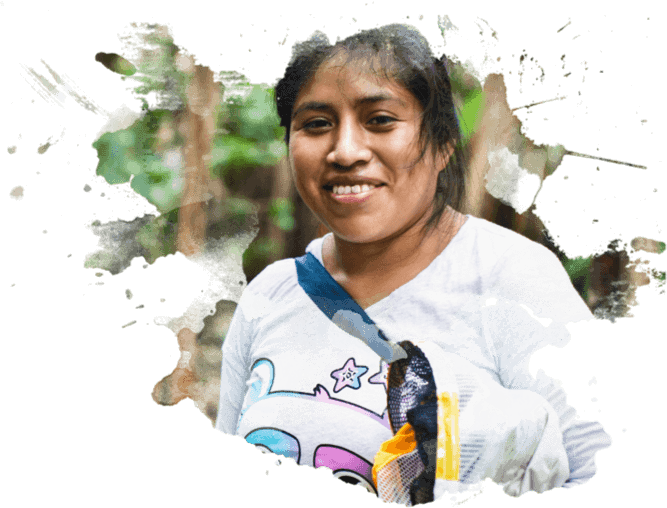
“We’ve had good results because it made us diversify our source of income beyond just coffee.” Manuela, Guatemala
Sweet success
Like many in her community in Guatemala, 21-year-old Manuela Choc López used to rely on coffee production to earn a living. But an epidemic of coffee leaf rust led them to beekeeping to diversify their incomes and strengthen their food security. Completing the circle, it turned out the bees also helped boost their coffee harvests.
“Before we had bees, coffee plantations didn’t have many flowers,” says Manuela. “But now, thanks to pollination done by bees, we’re seeing great results in our coffee plantations and in trees near the apiary. They’ve helped a lot with our coffee harvest.”
It is estimated that between US$235 billion and $577 billion worth of annual global food production relies on direct contributions by pollinators.

DID YOU KNOW?
Only the queen in the hive lays eggs, around 1,500 per day. Worker bees are all female.
Source: ontariohoney.ca

“We usually sell about 500 kilos of honey every year. This year may not be as good, however, given the rainy summer and frost early in the spring.” Ljiljana, Kosovo
A stinging truth
As we have seen, bees are guardians of biodiversity and ecosystems. Their presence or absence can indicate the state of the environment around them, alerting communities of potential threats or changes.
Nevertheless, bees and other pollinator populations have significantly decreased, and some bees and butterflies are under threat. Some of the reasons are pests, use of pesticides and other non-sustainable agricultural practices, pollution and loss of habitat. Much of this can be traced to human activity. The European Union banned the use of bee-harming pesticides as a measure to protect bees and other insects vital to crop production.

DID YOU KNOW?
Of the 100 crop species that provide 90 percent of the world’s food, over 70 are pollinated by bees.
Source: UN Environment

“In the last two years, the winter and spring weather have been strange.” Ejup, Kosovo
Bees’ survival and development are also threatened by climate change. In some places, extreme temperatures, floods, droughts and other climate events have killed off bees in their thousands. Across Europe, bee populations and honey stocks have been falling since 2015, in some places up to 30 percent annually.
In Kosovo, winters are getting longer, and the bees have one less month to collect pollen from nearby pastures and forests. "In the last two years, the winter and spring weather have been strange," reflects Ejup Mustafa, a 63-yeard-old beekeeper. To help producers, including beekeepers, adapt and become more resilient to changing weather patterns, UNDP works with communities to design solutions for sustainable agriculture.

DID YOU KNOW?
The vast majority of pollinator species are wild, including more than 20,000 species of bees.
Source: UN
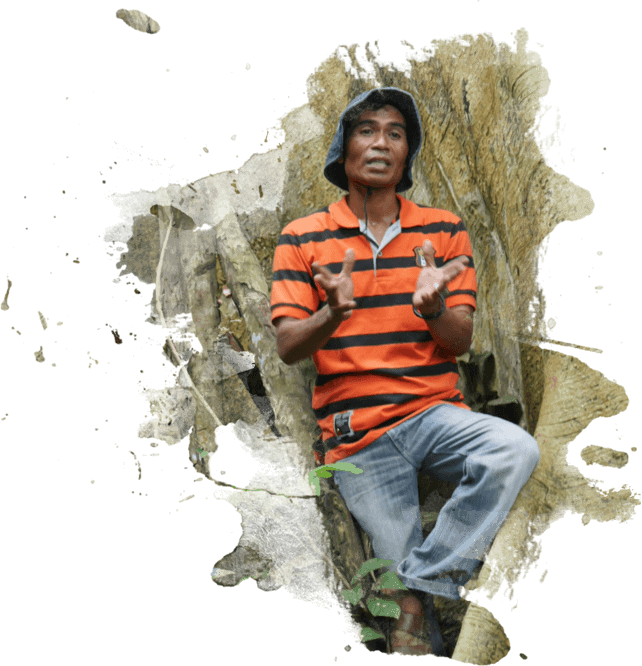
“The rainy season has come early.” Sadikin, Indonesia
“We are not responsible for causing climate change,” says Sadikin, a 38-year-old father of five and honey hunter for more than 15 years. “All we can do is change the way we collect honey.” Armed with a steel blade, a bucket and a whole lot of courage, every day he climbs Indonesia’s largest trees, the majestic Boan tree, looking for the sweet nectar. But changing weather patterns are bringing more rainfall, and flowers aren’t blossoming.
In some areas, global warming is causing spring to arrive early and autumn to come late, and not all species are adapting at the same rate. Flowers are blooming at different times than they used to, when bees aren’t there to pollinate, with potential knock-on effects for entire ecosystems.
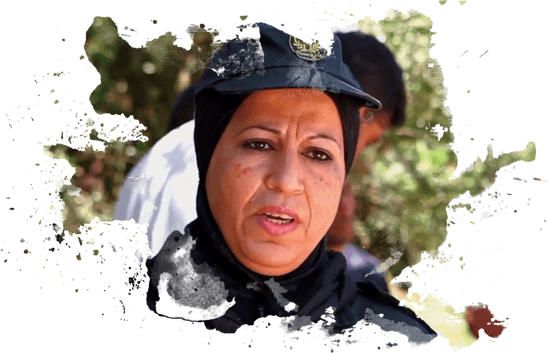
“I found young people who are unemployed, doing seasonal work, to promote this business.” Nadira, Algeria
Be(e)friend the pollinators
There are many things we can do to protect bees and other pollinators. Maintaining their habitats and committing to more sustainable agricultural practices, including the use of indigenous and local knowledge and avoidance of pesticides, are key to safeguard these species, says UNEP. Bee-friendly plants, like mango, thyme and water grass, can also help them thrive. Each of us can choose local organic produce when possible and help raise awareness about the importance of bees for our ecosystems. These actions will help protect the environment and ensure the future of these industrious insects and the variety of the food on our tables.







